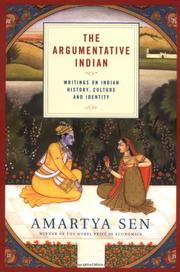

THE ARGUMENTATIVE INDIAN
Writings on Indian History, Culture and Identity
by Amartya Sen
Occasional pieces on his native land by Nobelist Sen (Rationality and Freedom, 1999, etc.).
Even the rather commonplace observation that India is incredibly diverse seems fresh when elucidated by the author in an essay devoted to the country’s many calendars: the Buddha Nirvana, the Saka, the Kollam, etc. How do all these different groups, with their different calendars, coexist? Over the centuries, states Sen, India has developed a robust “argumentative tradition,” a practice of rational discourse. This tradition, he declares, is valuable in a society pursuing democracy, yet it has been neglected in recent years. Religionists in India have their own reasons for promoting a particular piece of its eclectic history, and Westerners too often reduce the subcontinent to a place they can visit when they need a shot of mysticism. Sen denounces—and indeed disproves—the bigoted view that reason is essentially Western or European. India, he makes plain, has a long tradition of civil debate, of secular thought and of contributions to math and science. The opening essays are broadly historical, but Sen moves on to issues of greater relevance and urgency. In “India and the Bomb,” he untangles two distinct issues: the world’s stance on weapons, which “needs a change and in particular requires an effective and rapid disarmament”; and India and Pakistan’s “nuclear adventures,” which he believes cannot be rationalized by pointing out that many other countries have nuclear weapons. Sen urges India to practice “nuclear abstinence” and to press for disarmament around the globe. In another piece, he limns class division in contemporary India and suggests that some of the recent policies designed to ameliorate this rift have actually calcified it. In an essay on gender, Sen urges India to appreciate how much women can do to uplift a society. Collections of previously published essays often prove uneven; this one is remarkably uniform in theme and quality.
A bit dense at times, but ultimately revelatory.